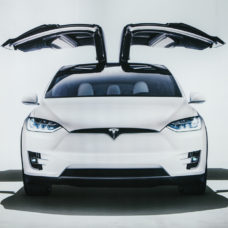Navigant Research has ranked Tesla Motors as the second to last on its 2018 list of 20 companies working on automated driving systems. Waymo tops the list, followed by GM Cruise and Ford Autonomous Vehicles.
To rank these companies, Navigant used 10 metrics, which are: vision, go-to market strategy; partners; production strategy; technology; sales, marketing, and distribution; product capability; product quality and reliability; product portfolio; and staying power.
To not appear even among the top ten vendors, let alone to occupy the penultimate position on the list, is at least not the performance we expect from a trailblazing company like Tesla.
We don’t know how Tesla performed regarding the criteria, it’s safe to assume it ranked low on most of them.
While we need a tweet from Elon Musk to enlighten us on this issue ASAP, we think there’s at least one reason for Tesla to feel secure enough about its full-autonomous driving program. This critical aspect isn’t clearly reflected in the aforementioned analysis.
One Area Where Tesla Leaves Competition in the Dust: DATA
You can’t build an advanced AI system without data.
A deep neural network is like a newborn whose communicative skill development depends largely on the information it gathers from its environment.
When it comes to self-driving vehicles, AI-powered autopilot systems are of the utmost importance. You can have your self-driving tech as advanced as you want, but without the relevant data to learn from, it’s useless.
Tesla has plenty of data thanks to its fleet of vehicles roaming the roads on a daily basis. Something other companies in the field utterly lack when compared to Tesla. And thankfully we have some number-crunching.
Tesla has a fleet of about 500,000 electric vehicles fitted with Tesla’s autopilot that ensures “full” self-driving. If each vehicle drives 30 miles every day on average, we’re looking at around 15 million miles per day.
In other words, this translates to mountains of raw data that Waymo’s fleet can’t brag about collecting over its entire existence.
And there’s more because Tesla’s fleet is continuously growing by about 5,000 cars per week. Self-driving cars will connect to each other to form a gigantic data-amassing network. Then off to deep learning agents to process and train on.
What AI systems will do with data can make or break the future of self-driving vehicles.
Read More: Is Tesla’s Autopilot Getting Worse?
What Could Musk be Cooking for Level-5 Cars?
Level-5 means fully-autonomous cars, and obviously, we’re not there yet. We’re at Level-3 at best with cars equipped with your average driver assistance system, no matter how advanced at this point is.
Getting to Level-5 will be a huge leap for driverless cars that will have to see surroundings, navigate, park, suggest journeys, make real-time decisions, monitor other vehicles on the road, all on its own without the slightest intervention from a “driver”.
To handle these tasks and many more, cars need data and AI to crunch data. But to collect data in the first place requires a variety of advanced and specialized sensors, and this is where the automotive industry encounters a big roadblock.
However, Tesla CEO Elon Musk doesn’t seem to make much of vehicle sensors.
Last month, Tesla hosted its “Autonomy Day” event for investors. It was an occasion for Musk to cry down competition, as he usually does.
For Musk, the LIDAR sensor is “a fool’s errand” contrary to what everybody else thinks.
According to Musk, “anyone relying on LIDAR is doomed. Doomed. Expensive sensors that are unnecessary. It’s like having a whole bunch of expensive appendices… you’ll see.”
I guess we’ll have just to wait and see. In any case, the future of autonomous driving is bright, what remains to be seen is who will be leading the charge.



















Comments (0)
Most Recent